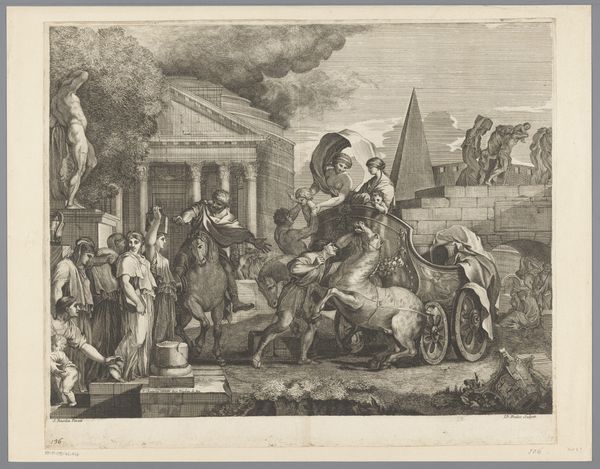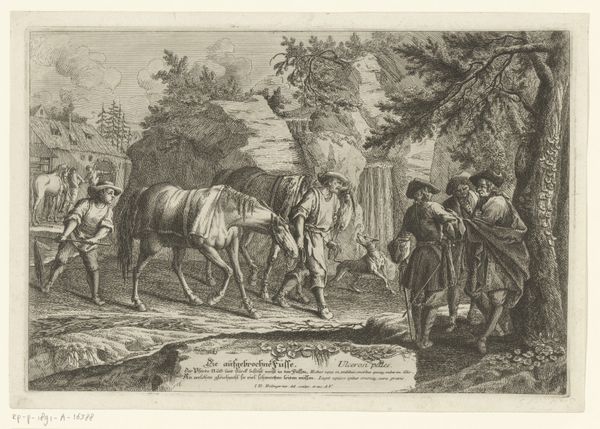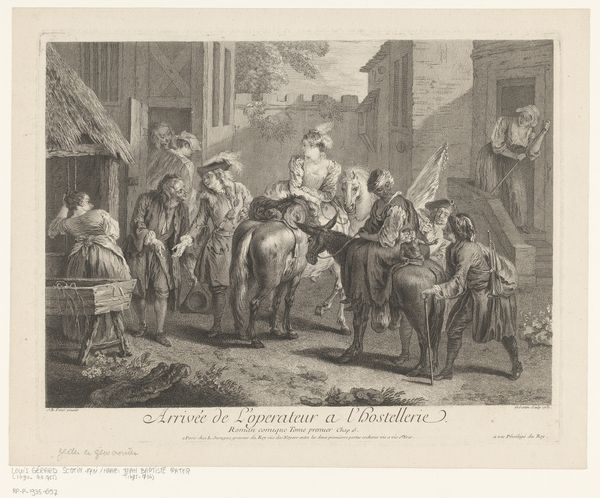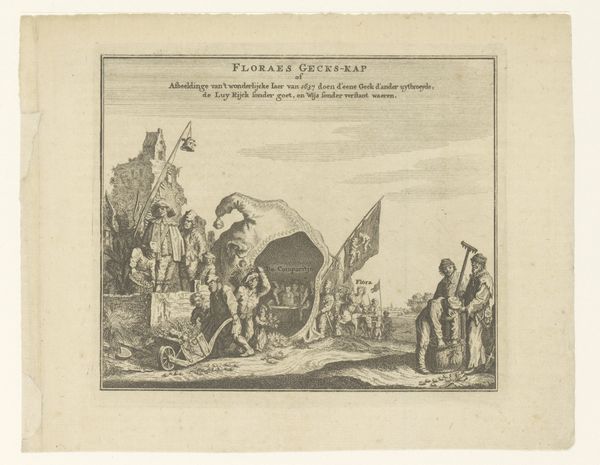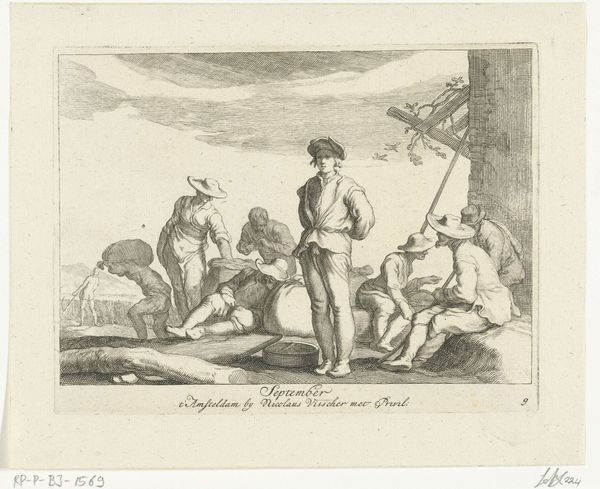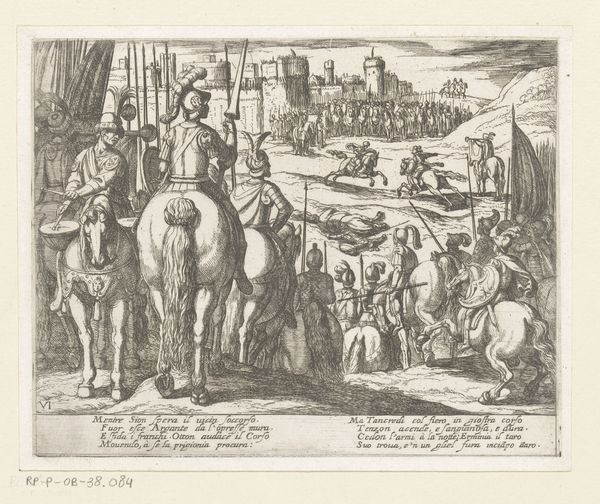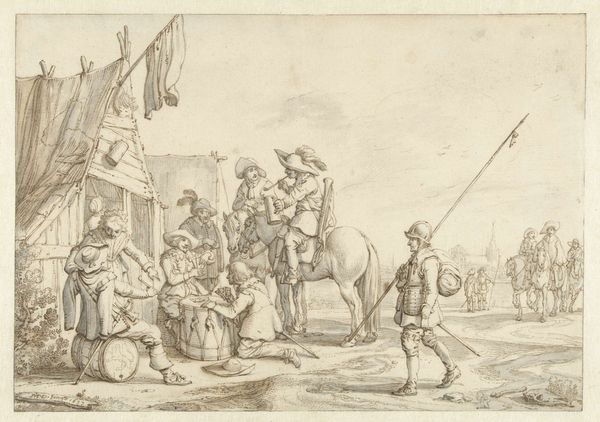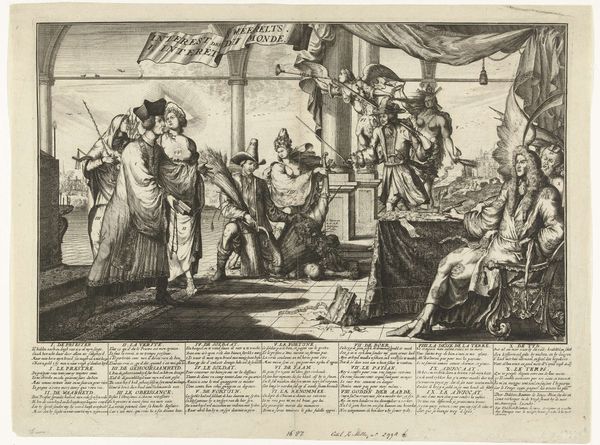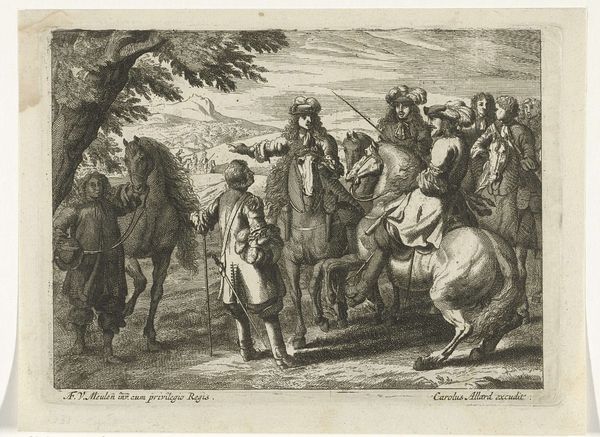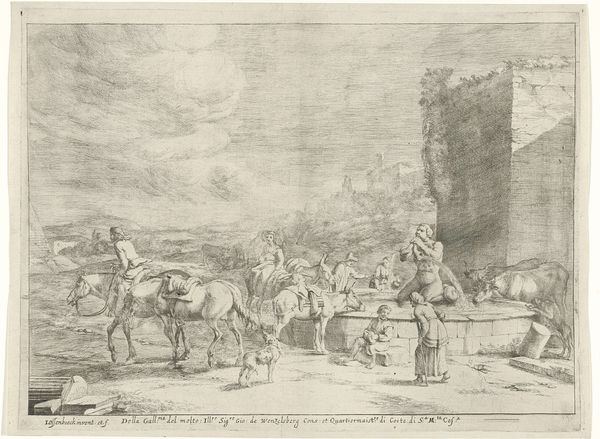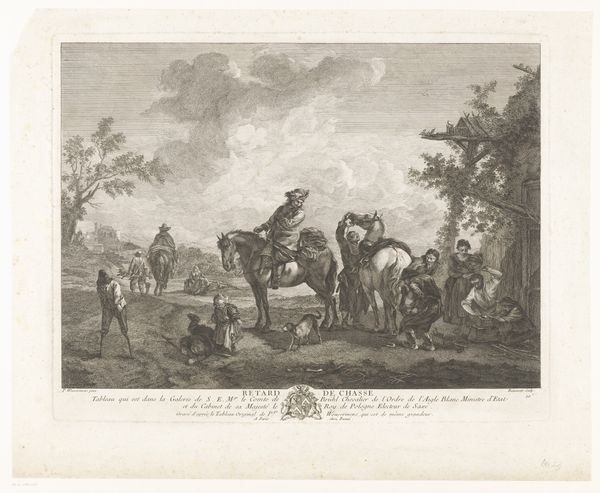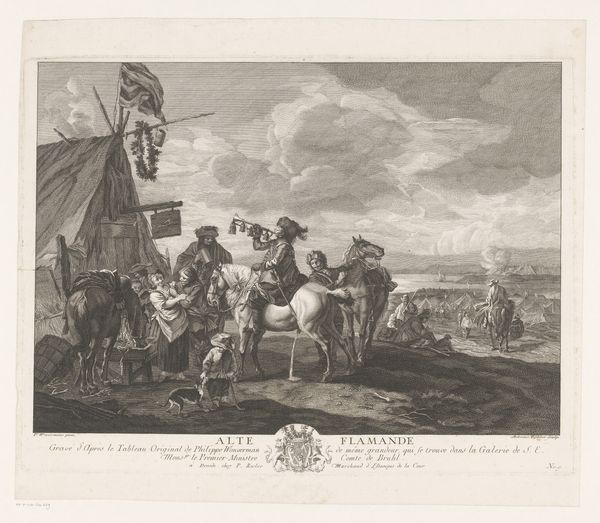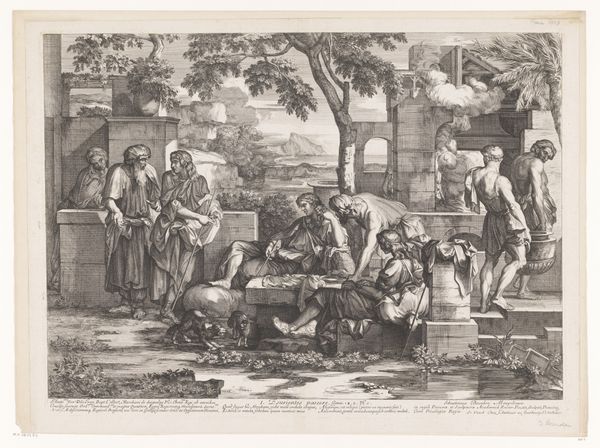
Kaartende soldaten: allegorie op de inname van 's-Hertogenbosch en Wesel in 1629 1629 - 1647
0:00
0:00
claesjanszvisscher
Rijksmuseum
print, etching, engraving
#
narrative-art
#
dutch-golden-age
# print
#
etching
#
caricature
#
old engraving style
#
caricature
#
figuration
#
line
#
cityscape
#
genre-painting
#
history-painting
#
engraving
#
realism
Dimensions: height 233 mm, width 297 mm
Copyright: Rijks Museum: Open Domain
Curator: Welcome. Before us hangs a print titled “Kaartende soldaten: allegorie op de inname van 's-Hertogenbosch en Wesel in 1629,” created sometime between 1629 and 1647 by Claes Jansz. Visscher. It’s held in the collection of the Rijksmuseum. Editor: My first impression? Chaotic, but also sharply observed. The detail is astonishing. It feels very…material. The way the light falls on the soldiers' garments, the rough texture implied by the etching technique… It emphasizes the immediate lived experience. Curator: Indeed, the piece blends genre painting with historical narrative through its careful composition. Notice the soldiers gambling, an everyday activity, juxtaposed with the implied backdrop of war. Visscher cleverly integrates the cityscape with these soldiers around a building to hint at the context of conflict and siege. Editor: Absolutely. But what I find especially compelling is the suggestion of a hierarchy revealed through their placement: commanders on horseback, laborers attending to their tasks… We can infer so much about the lives, labor and materials involved in war simply from observing how Visscher has constructed this space. Curator: I see that, and it really is fascinating to consider that this print wasn't just a snapshot. Rather, Visscher chose to utilize very specific elements. The composition guides our eyes through the scene and there's even text embedded to enhance the allegory. These figures symbolize much more than what's at first glance. Editor: For me, it is really all about accessing that broader symbolic reading through the immediate sensorial impact of this piece—how it makes concrete the relationship between military campaign and lived spaces. By making this artwork using a print medium, it underscores not just war’s effects but also the labor that enabled its mass production and consumption. Curator: A truly evocative work from the Dutch Golden Age that gives us much to ponder. Editor: Definitely, a testament to how form can be a tool to open wider cultural discourses about conflict.
Comments
No comments
Be the first to comment and join the conversation on the ultimate creative platform.
